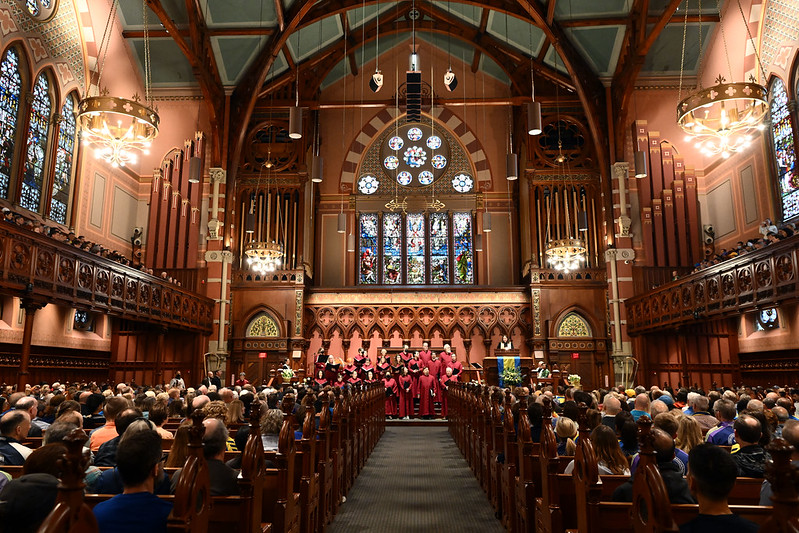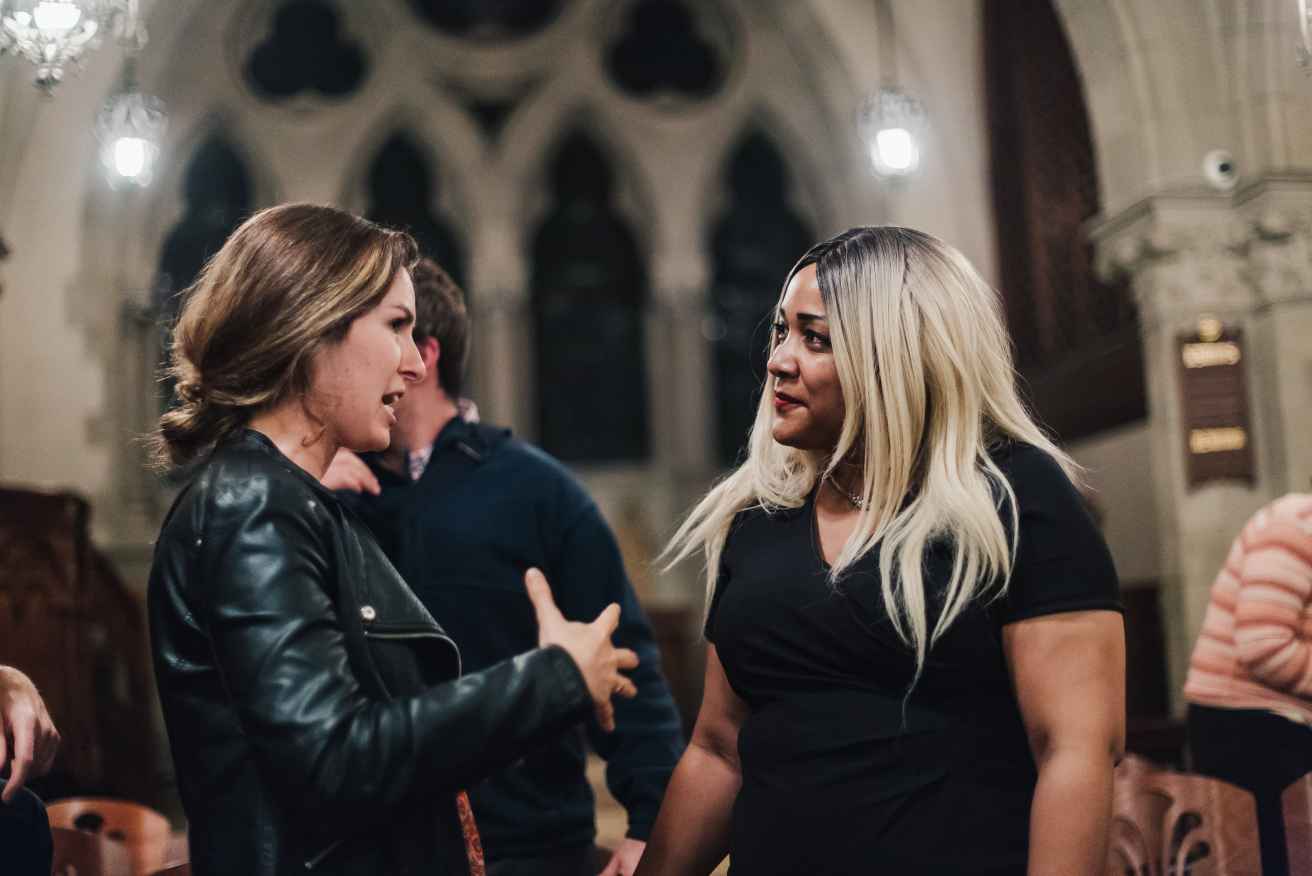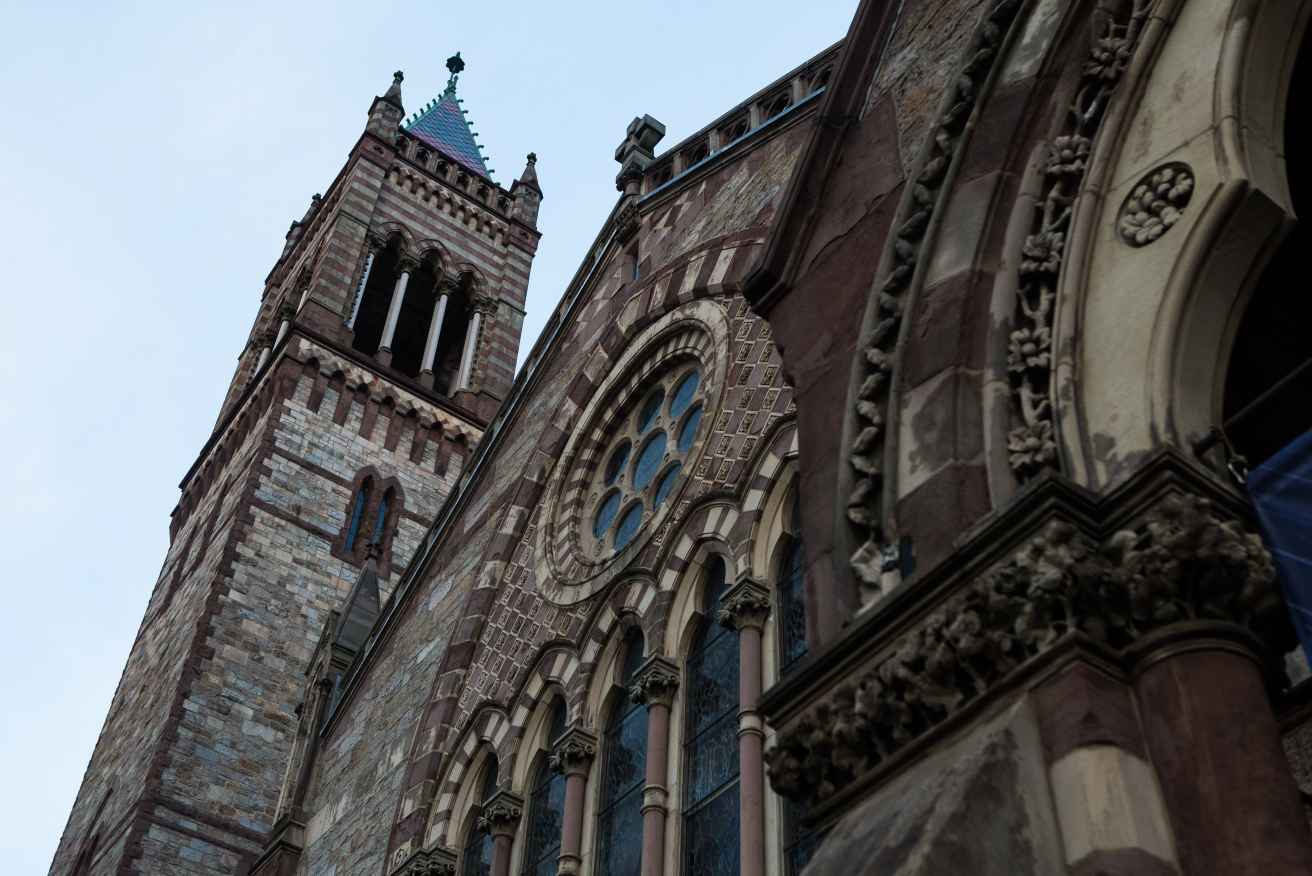Festival Worship
Festival Worship
Beautiful
It is the single most painted story . . . ever. It has depleted more tubes of oil paint, exhausted more pastels, taken up more square feet of canvas, worn out more paint brushes, inspired and perplexed and challenged and engaged more artists, than any other scene1 . . . ever.
The moment that artists have captured more times, in more ways, in more colors, with more moods and more poses, than any other, is the moment Gabriel tells Mary she has been chosen to bear God's child. It is the moment she is named, Theotokos, God-bearer. The Church calls this moment: The Annunciation. . . the announcement.
For much of the Church since the second century, this moment marks the beginning of salvation. It is here that the divine and the human mingle . . . it is here that grace descends to earth.
The truth is, however, that the Virgin Birth is not everyone's idea of either beauty or grace. It is also perplexing, fraught, a stumbling block.
In 1987 a man named Robert Arthur Cambridge, armed with a shotgun, entered London's National Gallery. He stalked the paintings looking for just the right one upon which to unleash his anger and unload his weapon. His gazed fixed upon Leonardo Di Vinci's The Virgin and Child. He lifted the shotgun out from under his long coat, aimed it at the painting, and blasted it. 2
There are several other such instances of people attacking artistic renditions of the Mother and Child.
A contemporary Christian writer, Diana Butler Bass, tells the story of speaking in a large Episcopal Cathedral. When asked about the Virgin Birth the discussion turned heated. The participants, mostly Episcopal clergy and laity debated vigorously the scientific, historical, biblical and theological angles. When her lecture was over, a teenager who had been setting up the refreshments while he listened to the various arguments, approached to tell her that he just didn't understand why everyone was so upset about the truth of the doctrine. As he put it, "I believe in the Virgin Birth. It is so beautiful that it has just got to be true-whether it happened or not." 3
Not all agree.
I had the privilege some years ago of studying theology at Yale Divinity School. During the course of three years there, several of my seminar classes were held in the Divinity School's RSV Room. The RSV Room was so named because it was there that scholars laboring away on the Revised Standard Version of the Bible convened.
The undertaking of the translation of the Revised Standard Version was enormous, and it was electric. It was the hope and intention of these scholars to create the next great translation . . . next, that is, to the King James Version, published 400 years earlier. 4 In those intervening 400 years there had been plenty of other translations . . . but none of them had achieved greatness.
The RSV was to be a scholarly translation, but also accessible, modern, American and a translation of great stature. It would be informed by modern scholarship, by linguistics and archeology, but also most notably, by the discovery the Dead Sea Scrolls.
A team of distinguished and accomplished scholars was gathered.
For fifteen years the scholars labored. Over those fifteen years they convened regularly at Yale Divinity School. For days on end they poured over the ancient texts, one word, one phrase, one sentence at a time.
Over the course of those fifteen years, they watched each other age . . . some growing too fat, others too, thin. They lived through each other's broken hips, the death of spouses, the onslaught of illnesses. They celebrated the birth of grandchildren, the accomplishments of children. They prayed, and worried, and argued out of the Great Depression and through a World War. Their work was laborious, painstaking, complicated, drawn out and, not least, it was contentious.
The RSV Room, so named for this undertaking, is curiously equipped with two sets of doors: an inner set and a heavy outer set. Curious . . . until you are told that the translators argued so heatedly, so vigorously that their disputes thundered and rumbled through the halls of the school, so much so that that the students couldn't learn and the faculty couldn't teach.
It was during this period that the second set of heavy doors was installed . . . its purpose: to muffle the heated, argumentative translators.
Having begun their work in 1937, the RSV was published in 1952 to great acclaim . . . well, mostly. It did achieve the stature it's translators had hoped for, but it was not without controversy.
It so happens that the RSV's translation of a single word from the Book of the Prophet Isaiah (chapter 7, verse 14) had an effect the translators would never had anticipated.
Isaiah 7:14 in The King James Version: "Behold, a virgin shall conceive, and bear a son, and shall call his name Immanuel."
Isaiah 7:14 in The Revised Standard Version: "Behold, a young woman shall conceive and bear a son, and shall call his name Immanuel."
The team of translators included a distinguished Jewish scholar. This was the first time ever that a team of Christian translators, intent on producing a Christian Bible, had employed the services of an observant Jew.
The translators accepted the recommendation of the Jewish scholar to translate the word which the King James Version rendered as "virgin" to "young woman".
In fact, the word had much the same meaning in the Hebrew . . . virgin, young woman: they were one in the same. Right?
But it was on this single word that, for many, the entire translation turned. Conservative and evangelical pastors and scholars accused the translators of denying the virginity of Mary and thus the divinity of Jesus.
It so happens that the new translation hit the book stores in the height of McCarthyism.
It so happens that the publisher chose to bind the new translation in a bright red cover.
Regrettably, the presence and influence of a Jewish scholar was also a source of some very ugly critique.
And so it was that the Revised Standard Version earned the title, "The Most Dangerous Book of the 20th Century." It and its translators were described as heretics and socialists. The translation was called "a work of Satan" and one pastor dramatically burned a copy of the red leather bound RSV during his sermon of a Sunday morning. As one evangelical pastor famously complained, "The King James Version was good enough for 400 years . . . why not 400 more!"
The publication of the RSV had the effect of inspiriting the King-James-Only-Movement. In addition, each new translation subsequent to the RSV was submitted to a litmus test by some conservative and evangelical pastors. As soon as the new translation was off the press, they would open it to Isaiah 7:14. If the verse included the word "virgin" it passed. If not, it was considered heretical
The Virgin Birth: is it exquisite mystery or is it hogwash? Is it beautiful or is it a reprehensible abuse of women . . . the cause of the idealization of Mary?
Is it necessary to Christian faith, or is it among our doctrinal options?
Perhaps the Virgin Birth is like a snowstorm. In the eyes of some it is magical, beautiful, full of excitement and mystery . . . a harbinger of joy and delight . . . news of which could only be borne on the exquisite, golden wings of an angel.
In the eyes of others the very same event is treacherous, perilous . . . demeaning of women . . . not to mention, somewhat dismissive of Joseph.
Some note that Mary is described as favored, perplexed, thoughtful and afraid. In Luke's Gospel she is a person of agency . . . which is a remarkable thing as the ancient scriptures are generally not so respectful of the women who people its pages. Mary brings to this moment her courage and her humanity, both questioning and submitting.
But, for others, it is yet another story of a man - albeit a deity - overshadowing, overcoming, over whelming a young, arguably defenseless female. Okay, she submitted, but really what choice had she?
For some of us, a snow storm is more than one thing at the same time: it is both beautiful and treacherous, both magical and unsafe, both perplexing and alluring.
In the end, the story of the Annunciation is the story of God at home here, with us, as one of us . . . taking on the feel of flesh and bone . . . submitting to the appetites and aches, the limits and the graces of these mortal bodies.
The story of the Virgin Birth is poetry and art, it is carol and anthem and dance and. It is intimate and strange. Artists have captured it more times, in more colors, moods and poses than any other event because it is the poetic insistence that God can and will break into our lives at times and places of God's own choosing.
---------
1. From "Surprised by Mary: Taking A Fresh Look at the Holy Virgin", by Jon M. Sweeney, 2006
2. Ibid
3. From Christianity for the Rest of Us, by Diana Butler Bass
4. See "The Bible Under Fire: A Video Commentary on the History of the RSV and NRSV Translations", .







